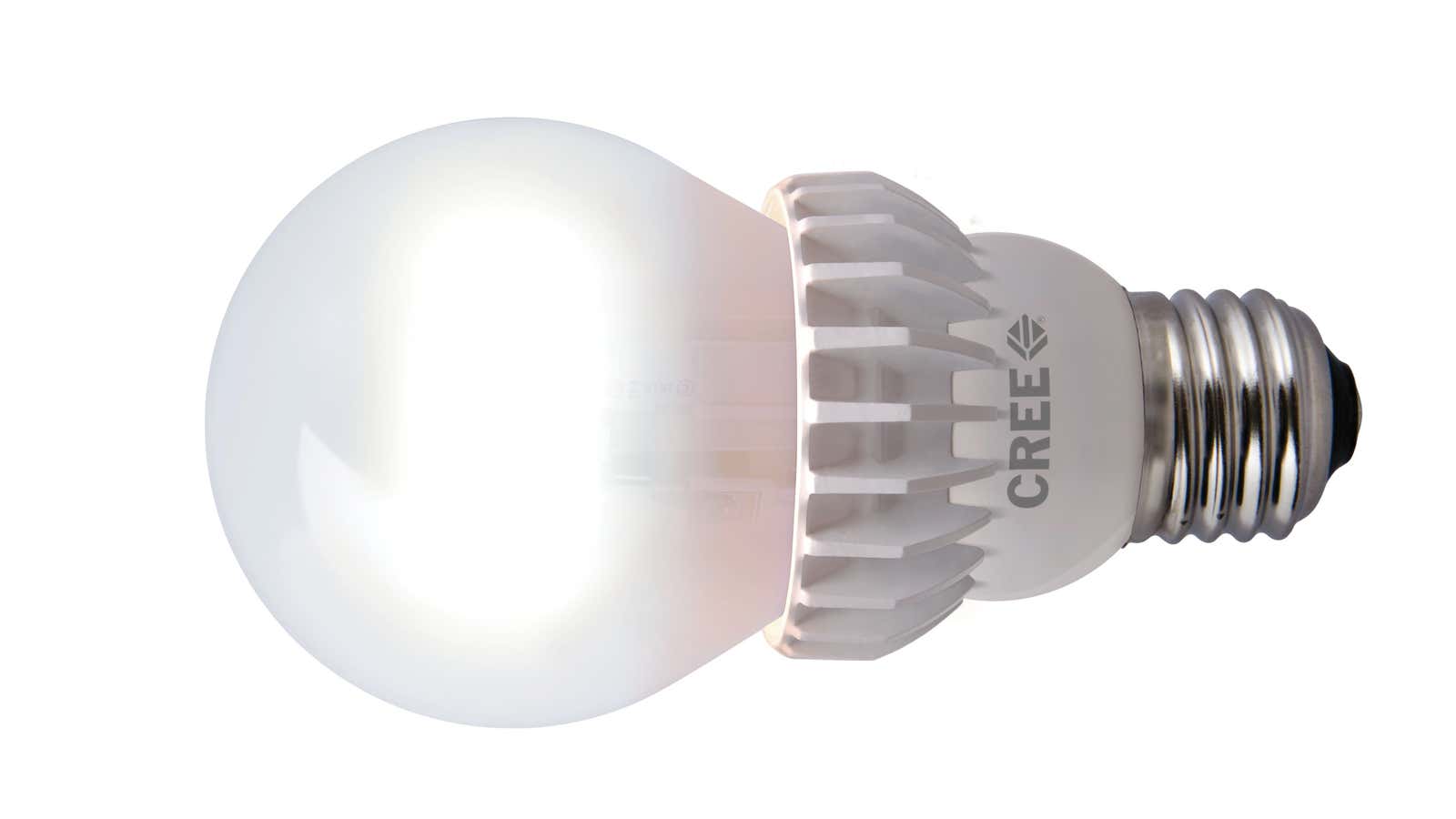LED company Cree this week pulled the covers off potentially ground-breaking lighting technology that could save billions of dollars annually in electricity costs and slash the average home’s greenhouse gas emissions.
What does this revolutionary device look like? A 100-year-old incandescent light bulb. What does it do? Provide the same light quality as a 100-year-old incandescent light bulb.
“To get people to try this technology the design principle we started with is that it has to look like a light bulb and work like one,” Cree chief executive Chuck Swoboda told Quartz in the penthouse at the Fairmont Hotel, a redoubt of old-money San Francisco that had been retrofitted with the new LED lighting.
Residential and commercial lighting accounted for 12% of the US’s electricity use in 2011, according to the US Energy Information Administration, and light bulbs consume 13% of a home’s electricity. Traditional incandescent bulbs are highly inefficient as most of the energy they consume is given off as heat rather than light. But efforts to get people to switch to more energy-efficient bulbs have faltered. Compact fluorescent light (CFL) bulbs use less electricity but usually give off a sickly glow that has proven a hard sell. They also contain toxic mercury, which makes recycling them problematic.
Companies like General Electric, Philips and Cree have begun selling residential LED bulbs, which generate light from semiconductors and are highly efficient—but they’re also expensive. And while the light quality is light years ahead of CFLs, they still don’t match the warm white glow cast by a cheap incandescent.
To encourage lighting manufacturers to improve light quality and get consumers to switch, California regulators have established standards that require LED bulbs to approximate the quality of incandescents. The standards are voluntary but manufacturers that meet them qualify for hefty utility rebates that allow them to slash the price of LEDs.
Cree is the first manufacturer to meet the California standards, which means its new dimmable TW (TrueWhite) 60-watt replacement bulb will cost consumers less than $10 at Home Depot, its sole distributor in the state. The bulb is rated to last 25,000 hours and carries a 10-year-warranty. (Philips’ 60-watt LED replacement, in contrast, retails for about $40.)
The quality of a bulb’s light is measured on a scale called a Color Rendering Index. A score of 100 approximates natural light, and most incandescent bulbs carry ratings in the mid-to-high-90s. To meet the California standards, an LED bulb must receive a minimum score of 90. Cree’s 60-watt and 40-watt replacement bulbs received a rating of 93.
The bulbs consume 78% less electricity than a comparable incandescent. About 80% of light bulbs used in California are still incandescents and Cree estimates that the state could save $3.5 billion annually in electricity costs if it replaced them with LEDs
The technological challenge, Swoboda says, was squeezing Cree’s advanced electronics into a product that Thomas Edison would recognize. Light bulb buyers may drive up to Home Depot in a Tesla Model S carrying the latest iPhone but they still want a light bulb that looks like a light bulb.
“Honestly, if you were designing from scratch you wouldn’t do that,” he says. “The iPhone came along in a very short technology cycle, replacing a flip phone which replaced a brick phone which replaced a bag phone. That all happened in about 20 years.”
“With light bulbs, you literally have 130 years of consumer expectation around a form factor,” he adds. “We realized you could either spend years trying to convince people to try something different or flip the problem around and give all the benefits in the same package.”




